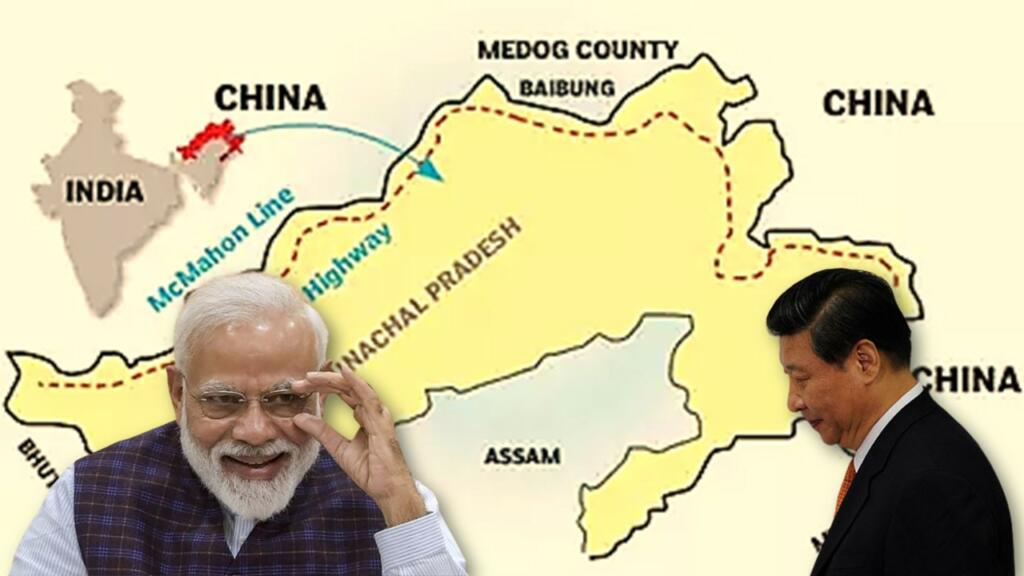Take your mind back to the pre-2014 era. When someone used the word ‘Northeast,’ what came to your mind? Terrorism? Civil war? Secessionism? Rebel groups? Irom Sharmila? All of these were negatively correlated with India. But, things have changed a lot in the last eight years. China is finding it tough to sustain its presence in the region and even in India-China border LAC. It is running out of time.
The Northeast is integrated
The revival of the Northeast has been the biggest story in the last eight years. PM Modi and his Cabinet brethren have abided by his call of terming the Northeast as “Ashta Lakshmi.”
The Modi government has poured Rs 336,640.97 crores in infrastructure creation and other developmental efforts in the region. Within the last 8 years, the annual budget allocation for the Northeast has increased by a whopping 285 percent. Apart from a special ministry for the Northeast, 55 ministries have to compulsorily allocate 10 percent of their budgets to the region.
These figures are reflected in the pace at which projects are kicked off and completed in the state. A total of 43 air connectivity projects are either complete or at various phases of completion in the region. Similarly, nearly 2,000 km of railway lines have been approved.
Two dozen new trains have been introduced in the region. A rail link between Tripura and Chittagong is also en route. The aim is to connect every city in the Northeast to the rest of India by the cheapest mode of long-distance transportation. After the completion of last-mile connectivity, ferrying heavy stuff for developmental projects will become easier.
Till then, the road network is being strengthened to bring about changes in the region. More than 9,000 kilometres of roads have been approved for the Northeast. These include highways and increasing lanes to existing roads, among others. 3,100 km of these roads have already been completed, while the rest are being completed. Similar efforts are being put in to assimilate Northeast rivers under Sagarmala project.
Decline in insurgency
These efforts have yielded tremendous results. People do not send their kids to sacrifice their lives for minor and major terrorist and secessionist groups present in the region. They are now searching the Internet for availing benefits under schemes like Kisan Samman Nidhi, Pradhan Mantri Garib Kalyan Yojana, Pradhan Mantri Awas Yojana, and Ayushman Yojana, among others. It has been enabled by the establishment of nearly 1,400 new mobile towers by the Modi government. BharatNet is a big hit in the Northeast as well.
Consequently, violence is down in the region and at India-China border. The Ministry of Home Affairs informs that after PM Modi took oath as Pradhan Sevak, violent incidents are down by 80 per cent in the region. Civilian deaths are down by 99 percent. Resultantly, security forces are also finding it easier to manoeuvre in the region. Earlier, locals used to be offensive to them. It has changed drastically, and casualties among security forces have gone down by 75 percent from 2014.
Also read: After 7 decades, Finally, Himanta Biswa Sarma gives wings to the North Eastern Youth
China can’t tolerate all of it
China is watching all of this from close quarters. For the past eight years, Jinping has seen local insurgents turning to PM Modi for talks. Initially, it found it tough to believe, but the Northeast’s rise as a key pillar of Act East Policy seems to be a defining moment for China. Insult to the injury was added by the way in which India used Tibetan refugees to lead the Strategic Frontier Force in the second half of 2020.
China understands that local support is diminishing. India has conducted special operations in Myanmar to drive out Chinese-supported secessionists. It has been looking for a way to undermine the Northeast for the last two years.
Also read: It is time to modify Jana Gana Mana to include North Eastern states
The Communist-ruled state has been trying to fund leftover secessionists. GlobalTimes only made it explicit in October of that year. In December 2020, Bloomberg reported that at least four separatist leaders were seen in the Chinese city of Kunming for training and the acquisition of weapons.
By all indications, China’s efforts to refuel secessionism in the Northeast have failed in the last two years. The primary reason behind it is that the number of local Chinese sympathisers is declining. Jinping understands its long-term consequences. It is only a matter of time before Chinese influence is obliterated in the region. Then, why would he not use military force at India-China border? It is only logical.
Support TFI:
Support us to strengthen the ‘Right’ ideology of cultural nationalism by purchasing the best quality garments from TFI-STORE.COM
